How To Choose Skateboard Wheels

When choosing your skateboard wheels, there are several factors you need to consider. Making sure you pick the right size and durometer (hardness or softness of the wheel) is crucial, as this makes all the difference to how the board feels when you start skating.
Skateboard Wheel Size
Skateboard wheel sizes vary, ranging from 50–75 mm, and there are some key differences between small and large sizes. Smaller wheels are lighter, making them more responsive. Larger wheels are heavier, but they roll faster and allow you to pick up more speed. The wheels you choose for your skateboard will mostly depend on the type of skating you do.
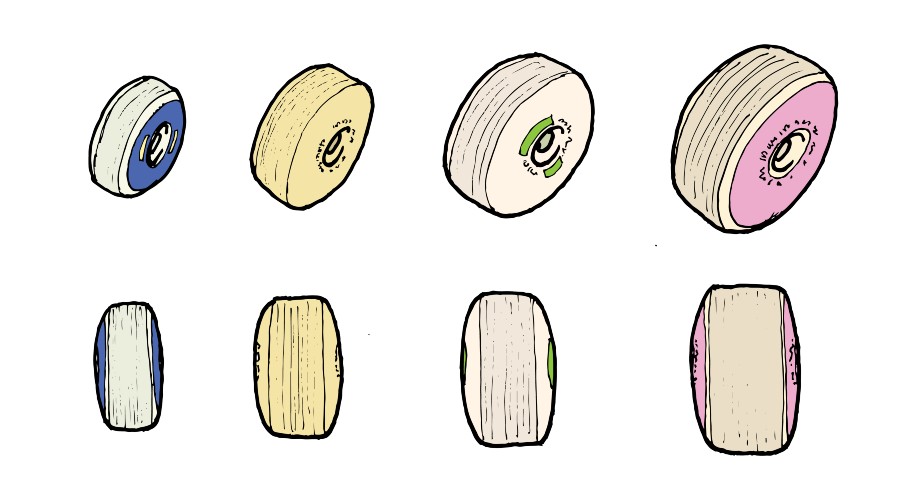
Street Skateboarding
Street skaters will be best served by a wheel size range of 52–56 mm, a balance of speed and lighter weight is ideal for performing technical tricks.
Skate Park and Bowl
55–60 mm wheels have a greater surface area, making them ideal for maintaining speed in parks and bowls and locking into grinds on coping. These typically come in the same or softer durometers than street wheels for added grip in concrete parks.
Vert Ramp
Much like for parks and bowls, 55–60 mm wheels are also ideal for vert skating on ramps. A wider surface contact area helps with stability on ramps as well.
Cruising
60 mm wheels and larger offer a smooth ride on rough surfaces, perfect for cruising and longboarding. Soft durometers offer superior grip and shock absorption, typically 75a-90a.
Longboarding
60 mm and over, with a soft durometer of 75a-90a for superior grip and shock absorption.
For Beginners
52–54 mm wheels are great for those starting out, especially for young kids. This range is ideal because it’s a great sweet spot in size and weight.
SHOP SKATEBOARD WHEELSSkateboard Wheel Durometer
Durometer refers to the hardness of the skateboard wheel and helps to determine whether a particular wheel is better suited to skateboarding or longboarding.
What Are Skateboard Wheels Made Of?
Skateboard wheels are made of a synthetic rubber known as polyurethane. How hard or soft this rubber is can be measured with what’s known as the durometer scale, a ranking system often represented in chart form. The measurement from the durometer scale tells us how much grip a skateboard wheel has and how much shock it can absorb.
Difference Between A Scale and B Scale Durometer
The A scale durometer is usually used for measuring softer rubbers. Most skateboard wheels fall somewhere between 75A and 104A; the lower the number, the softer the rubber.
The B scale durometer, on the other hand, is usually used for measuring harder rubbers and is 20 points lower than the A scale. For example, a wheel with 75B is as hard as a wheel with 95A.
Durometer Scale
Since the A scale durometer is used by most skateboard wheel manufacturers, we’ll list those wheel measurements and their benefits here.
| 75A to 87A | Extremely soft wheels designed for longboards; they have plenty of grip, making them perfect for absorbing shock on rough surfaces and enjoying smooth rides. |
| 88A to 95A | Slightly harder but still soft enough for cruising over bumps; this range is ideal for street skaters. |
| 96A to 99A | Great for smooth surfaces; these wheels provide good grip and moderate speed. |
| 100A and over | The fastest and hardest wheels; they have the least amount of grip and are perfect for technical skating and park skating. |
Wheel Cut or Shape
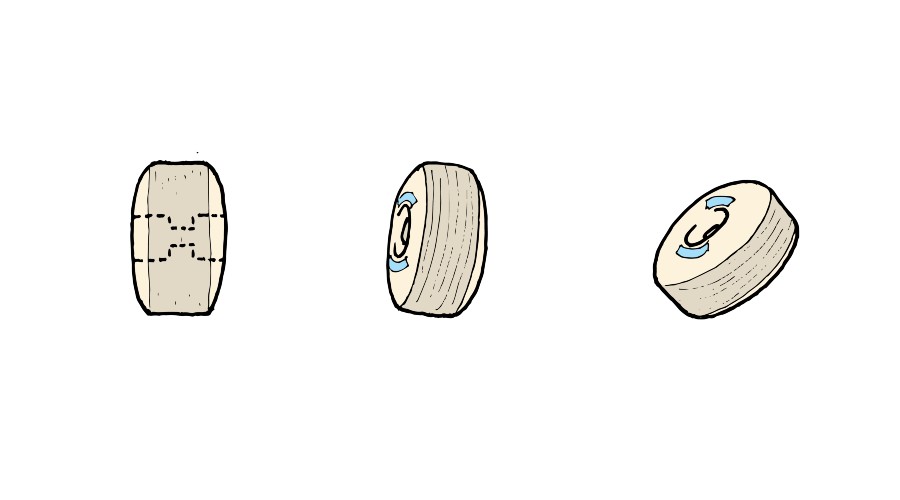
Standard Wheels, or classic wheels, have a narrow contact area and slightly rounded edges. They are the most common and popular skateboard wheels.
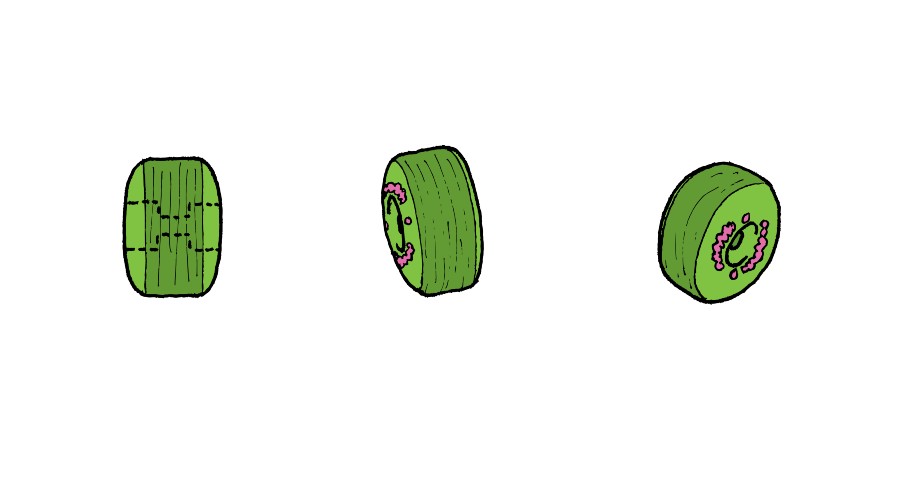
Cruiser wheels are similar in shape to standard wheels, except they have a much lower durometer. The softness of the wheels makes for an extra smooth ride.
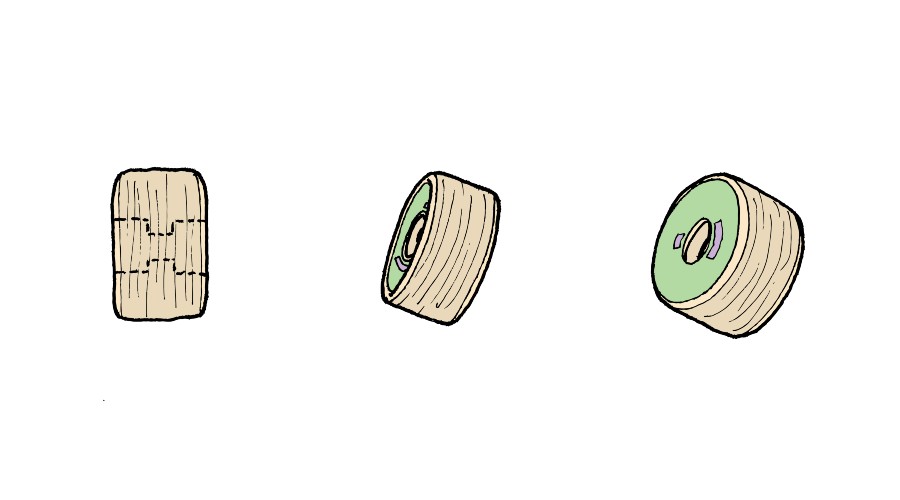
Full wheels have a wider contact area with more slanted edges. This makes them a good choice for transition skating because they have great stability, can maintain speed, and can easily lock into grinds on ramps and bowls.
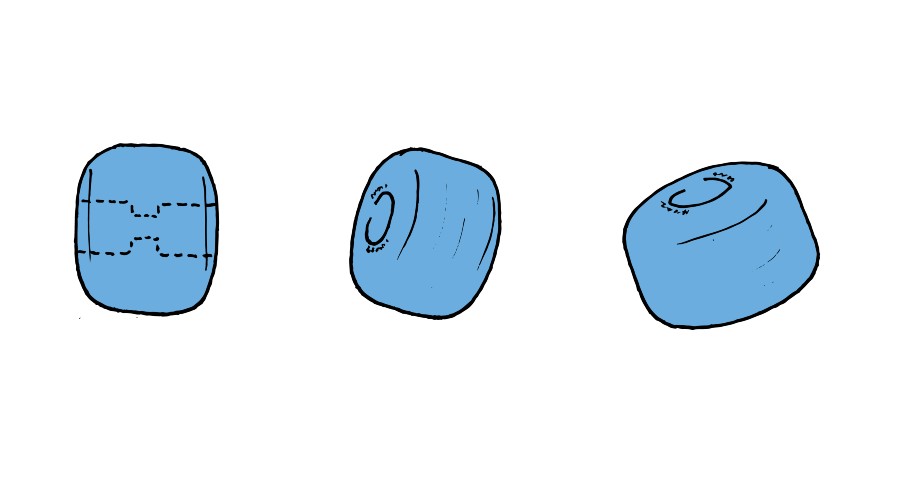
Rounded wheels also have a wider contact area, but with overtly rounded edges designed for smooth rides regardless of the durometer.
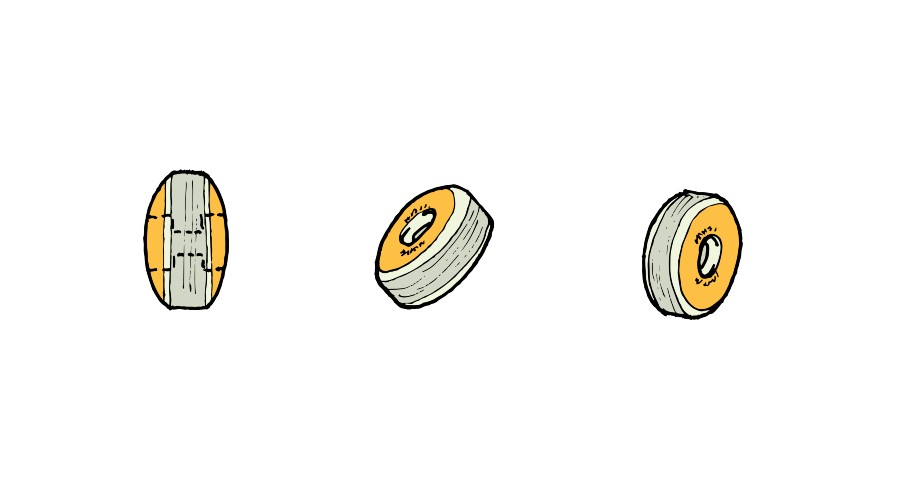
Rounded slim wheels contain the same overtly rounded edges as normal radial wheels, but with a narrower contact area, increasing speed control and slide responsiveness.
Although skateboard wheel sizes, durometers and shapes are designed with different types of skating in mind, they really come down to personal preference. The recommendations in this guide are a good place to start, and then you can switch things up based on what feels right.
SHOP ALL SKATEBOARDSRelated Guides
How To Choose Your Skateboard Size